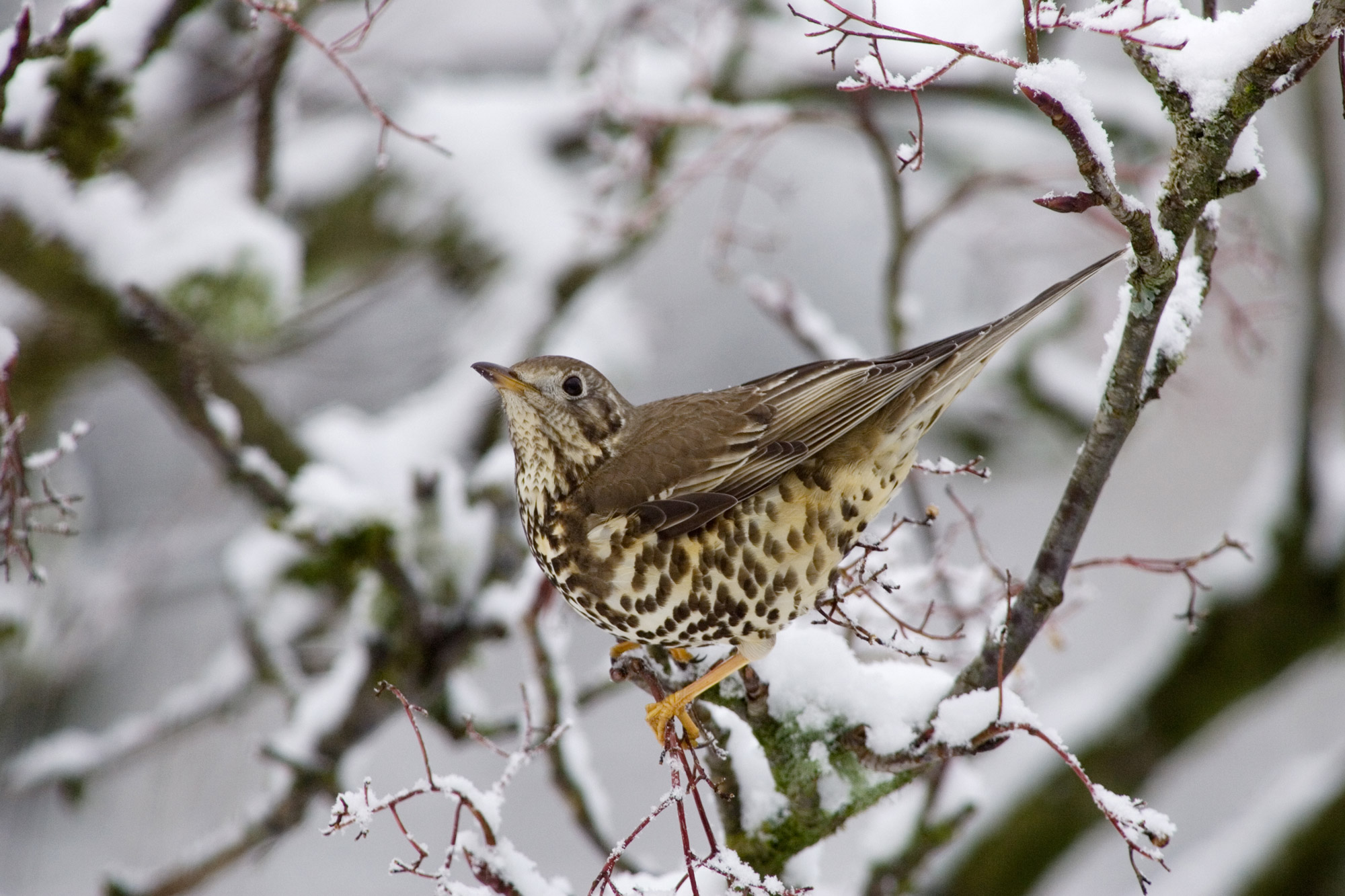
Garden birds in winter
20 commentsRobert began working at BTO in 2018 and is now positioned in the training team, allowing people to develop their ability and confidence to take part in BTO surveys. Rob is responsible for helping to create and deliver educational material and training activities around bird identification and BTO surveys.
Relates to projects
How do birds keep warm in winter?
In the recent cold spell, you may have been wondering how the feathered visitors to your garden survive. Although plummeting temperatures can make winter a challenging time for small birds, they have several adaptations which help them through the colder months.
Waterproofing
A bird’s feathers aren’t just for show. As well as the feathers we can see when watching birds, like those used for flight (the wing and tail feathers) and those which cover the bird’s body (‘contour’ feathers), there are thousands of tiny feathers sitting next to a bird’s skin (‘downy’ and ‘semiplume’ feathers). Each of these feather types is superbly adapted to its function.
Contour feathers are made up of a waterproof tip and a soft, downy base. They are arranged like roof tiles over the bird’s body, overlapping so the downy part of one feather is covered by the waterproof tip of another. The feathers’ waterproof properties are maintained through careful preening, which keeps them in an interlocking structure.
These feathers prevent cold water from touching the bird’s skin and are especially critical for birds like wildfowl and seabirds, which are regularly submerged or partially submerged in rivers, lakes or the ocean. However, these feathers are still important for birds in the garden, protecting them from cold rain and sleet.
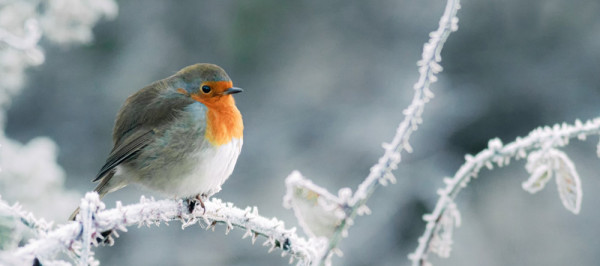
Insulation
Under the contour feathers sit downy and semiplume feathers. These are small, soft and fluffy, and trap an insulating layer of air around the bird’s body. This air is warmed by the bird’s body heat, and prevents the cold air in the environment from chilling the bird - a bit like wearing a thermal underlayer. The weight of a House Sparrow’s plumage increases by 70% in autumn as the number of downy feathers grows, maximising insulation in preparation for colder conditions.
Birds can also fluff up their plumage to increase the number of air pockets, which reduces heat loss in a similar manner to the benefits we gain from wearing several layers of clothing. That’s why you’ll often see birds looking ‘puffed up’ during cold weather - they’re trapping more air in their feathers to keep warm.
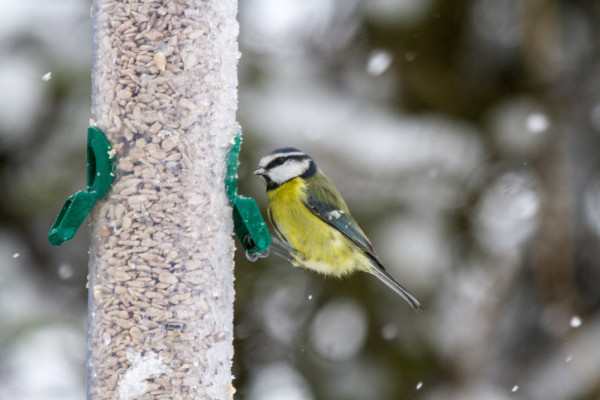
Heating the body from the inside
Just like humans, birds release body heat during respiration. This process takes place in body cells in specialised structures called mitochondria, and converts food into energy molecules which the body can use for movement and metabolic processes. In winter, more body heat is lost into the cold air, so birds need to eat more food and lay down more fat reserves to help them keep warm. Both Blue and Great Tits can lose 5% of their body weight between going to roost in the evening and beginning foraging at dawn, with more weight being lost overnight in cold weather than in milder spells.
Many of our small garden birds are only able to lay down enough fat to get them through a single night. This means they need to spend most of a typical winter’s day searching for food - up to 85% of the daylight hours.
The time spent foraging is typically greater for birds in woodland habitats than those using garden feeding stations, because the food is not concentrated in one particular area. Birds at more northerly latitudes of the UK, where the period from dusk to dawn can last 18 hours, will be particularly busy during the day, because there is less time to search for food.
A Blue Tit needs to eat almost its own body weight in invertebrates every day in winter, just to stay warm.
Blue Tits, which weigh around 11 g, need to consume around 1 kcal per gram of body weight each day during winter - around 11 kcal. This doesn’t sound like much, but is actually equivalent to the energy contained in around 300 small invertebrates, or 10 g invertabrate food in total - almost the Blue Tit’s own body weight! It is therefore not surprising that these small birds have to spend so much time foraging, and why garden feeding stations - where fat-rich and high-energy foods like peanuts and suet balls are readily available - are favoured.
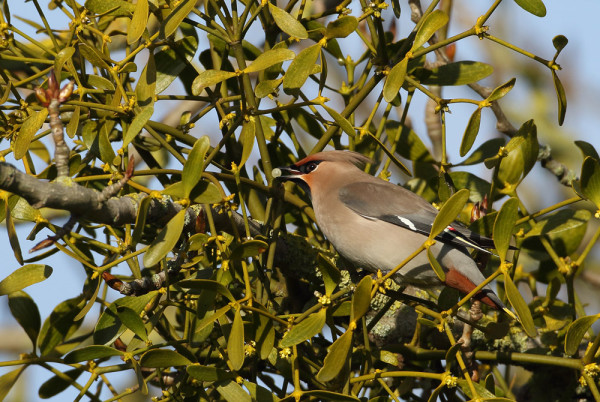
Birds and berries
In a cold spell, birds are drawn to energy-rich food sources, which means they may well be drawn into gardens and green spaces, searching for berries. These fruits are particularly favoured by thrushes, like Blackbird, Mistle Thrush and Fieldfare, and by wintering Blackcap and Waxwing.
Many ornamental trees and shrubs bear nutritious fruits in autumn and winter, as do the smaller native trees often planted for their autumn leaf and berry colour. The prevalence of trees such as Rowan and Holly in spaces such as parks or even supermarket car parks means that flocks of birds often forage close to human habitation.
A feast of berries provides energy for the birds, but it also benefits the plant. When birds eat the nutritious, fleshy fruits, they also eat the seeds inside. These seeds have tough external coats that protect them from the birds’ digestive systems, so they pass undamaged through the gut and are deposited elsewhere - with free fertiliser! This enables the plant to disperse its seeds over much greater distances than would otherwise be possible.
Visitors to winter berry trees
If you’ve seen a flock of birds enjoying berries in your garden, park or even supermarket car park, they’re likely to have been one of the following species.
If you want to brush up on your winter thrush ID, learn more about Redwing and Fieldfare or Song Thrush and Mistle Thrush in our ID Videos.
Fieldfare
- Sociable; mixes with other species, especially Redwing
- Greyish head and rump
- Chestnut wings and back
- Strongly buff chest
Redwing
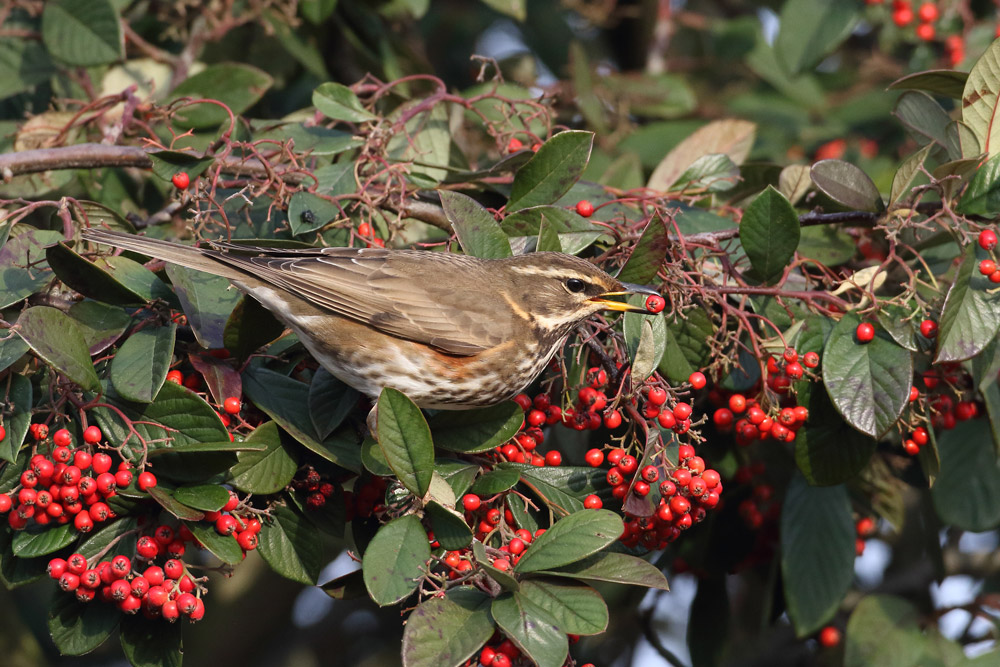
- Forms large flocks
- Similar in size to a Song Thrush
- Cream stripe above the eye and rusty flanks
- Characteristic 'zeep' flight call
Waxwing
- Unmistakable with a good view
- Distinctive eye mask and pointed crest
- Garrulous and vocal
- Not a member of the thrush family
Mistle Thrush
- A big, upright thrush with a 'slender' silhouette
- Often forms small groups in winter and will feed on the ground
- Appears greyish-brown from a distance
- Whitish tail-edges in flight
Song Thrush
- A small, dumpy thrush with a 'round' silhouette
- More common in woodland and scrub
- Much warmer brown than the superficially similar Mistle Thrush
- Not commonly seen in large groups
Blackbird
- Familiar member of the thrush family
- Males are striking black with yellow bill and eye-ring
- Females are dark brown
- Forms small groups in winter, although can be very territorial
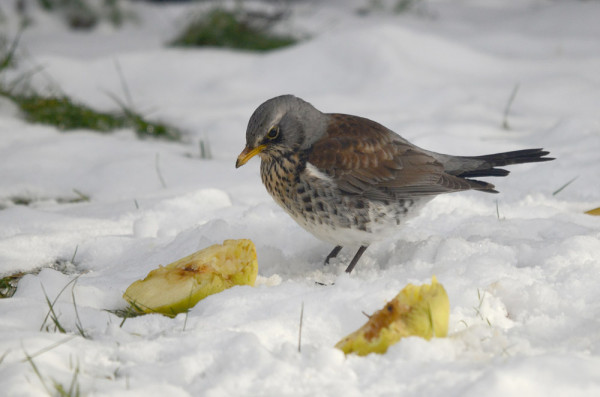
How can you help garden birds in a cold snap?
As we’ve seen, birds need to eat plenty of food during the winter days to help them keep warm overnight.
Provided you follow good garden feeding hygiene, you can support the birds in your garden with supplementary feeding:
- Old orchard fruits, such as apples and pears (the softer the better) are much loved by thrushes, such as Fieldfare, Redwing and Blackbird.
- Fat-rich food like peanuts and suet balls provide lots of energy per gram, making them a good choice in winter.
- Feed little and often to stop food from spoiling. We recommend only putting out enough food to last a day.
Read more about feeding garden birds
You can find more information about types of foods, including seeds, nuts, mealworms and fat-based foods, feeding hygiene, and gardening for birds on our Feeding Garden Birds pages.
Read moreBirds also need to keep their feathers in good condition to maintain their insulating and waterproofing properties. Bathing is key for this, so it’s important to provide fresh water - in a cold spell, the water in your garden might be the only source which isn’t frozen!
- If you have one, defrost your bird bath; use warm water but pour slowly if you have a terracotta bath to avoid cracking.
- If you don’t have a bird bath, you can place a shallow dish with water in your garden for birds to drink from and bathe in. Check it regularly to make sure it hasn’t frozen.
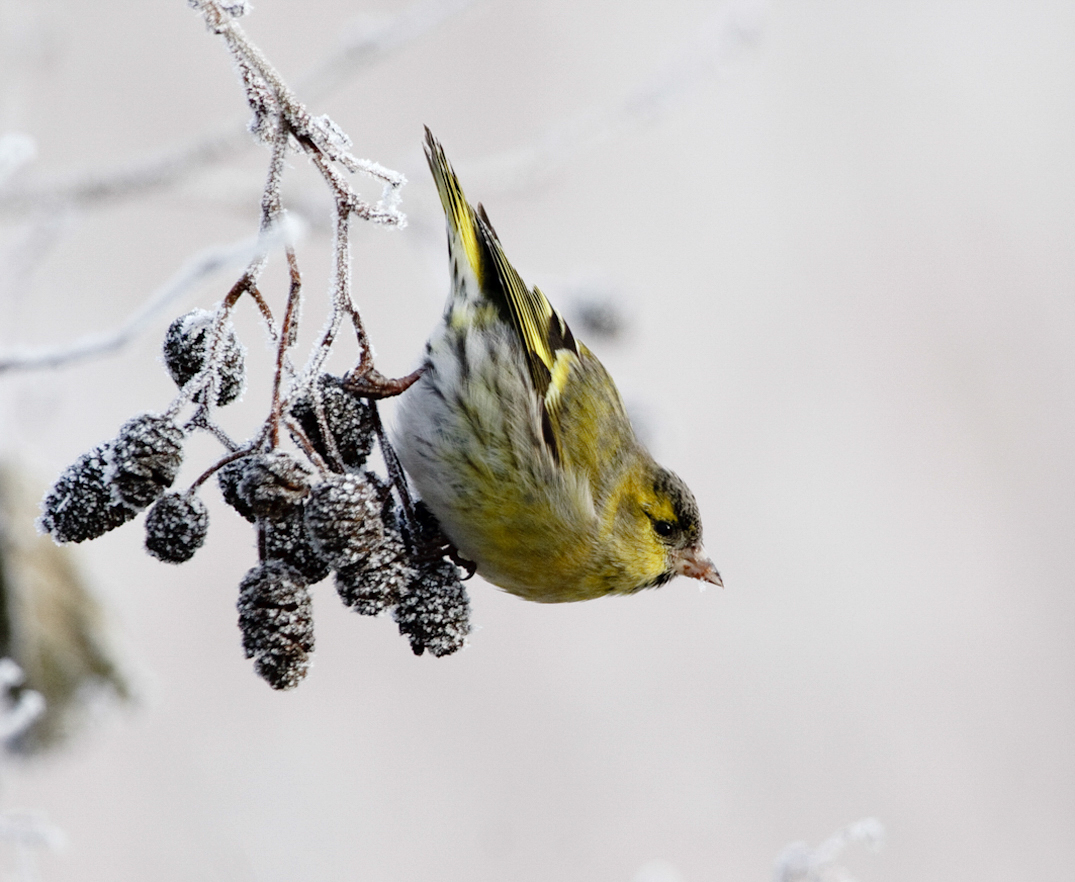
Join Garden BirdWatch for free
Become more connected to nature, learn about your garden wildlife and contribute to important scientific research by joining our community of Garden BirdWatchers.
Planning for the future
You can also use this time in winter to plant berry shrubs, which can be done any time the ground isn’t frozen. These will reward you and the birds in your garden well into the future by providing beautiful colours in autumn and a rich food source for wintering visitors.
Depending on the size of your garden, you could choose a native species such as Hawthorn or Rowan (also known as Mountain Ash), which need to be planted in the ground. If you have a small garden or cannot plant directly into the ground, you could grow a native Holly tree in a container.
Many ornamental shrubs like Cotoneaster and Pyracantha are also excellent choices and can be grown against walls, making them good options for smaller gardens.
Other climbing plants like Ivy and Mistletoe are also popular winter food sources for birds, and provide good nesting space in the spring and summer months.
Learn more about gardening for birds.
Have you seen any unusual birds in your garden in the cold snap? Do you feed your feathered visitors? Let us know in the comments below!




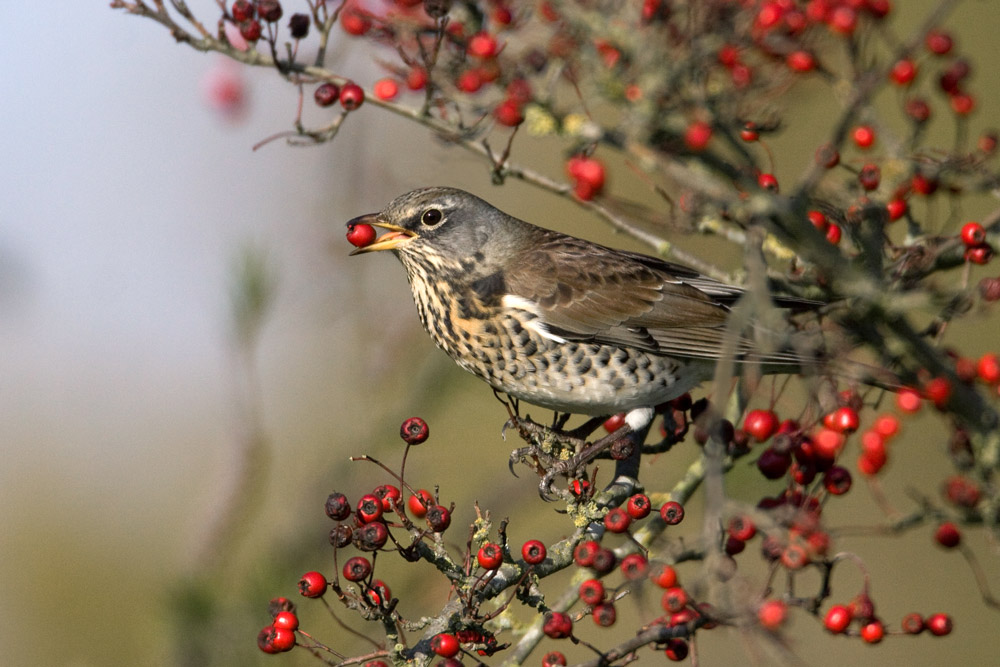
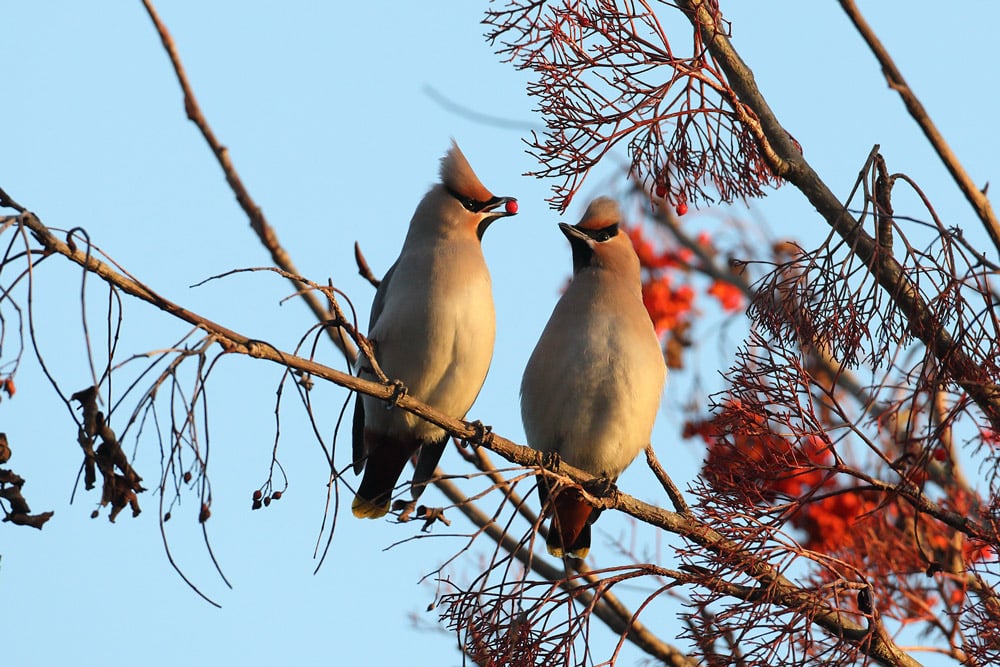
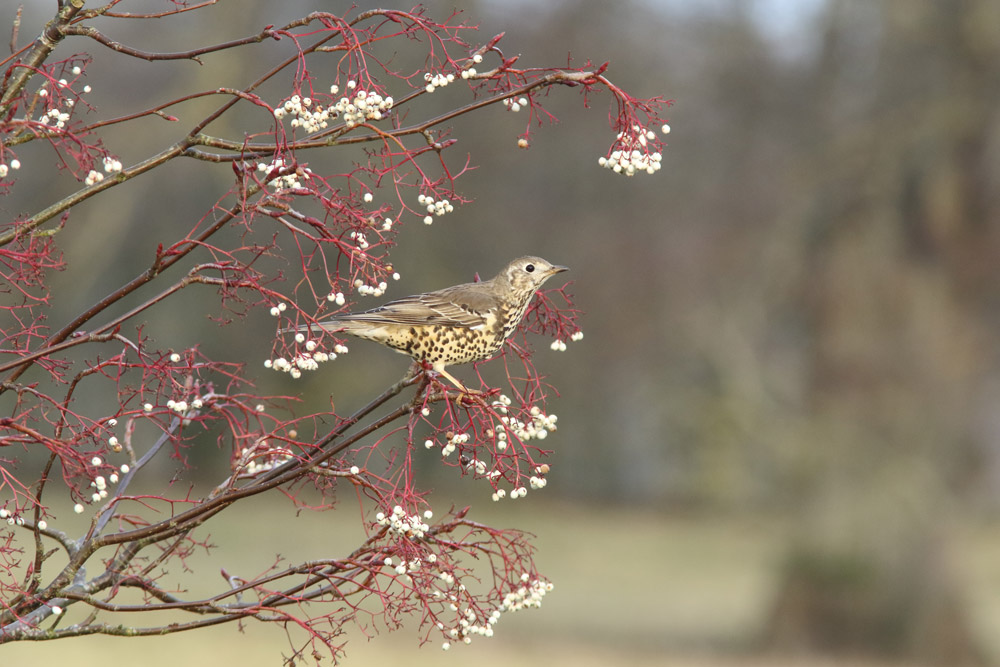
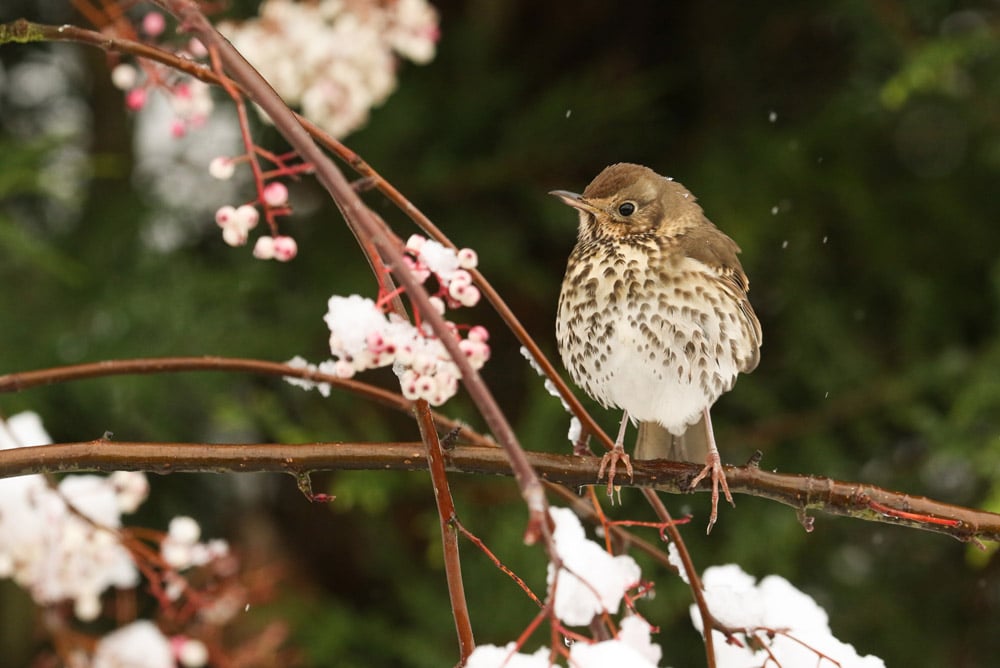
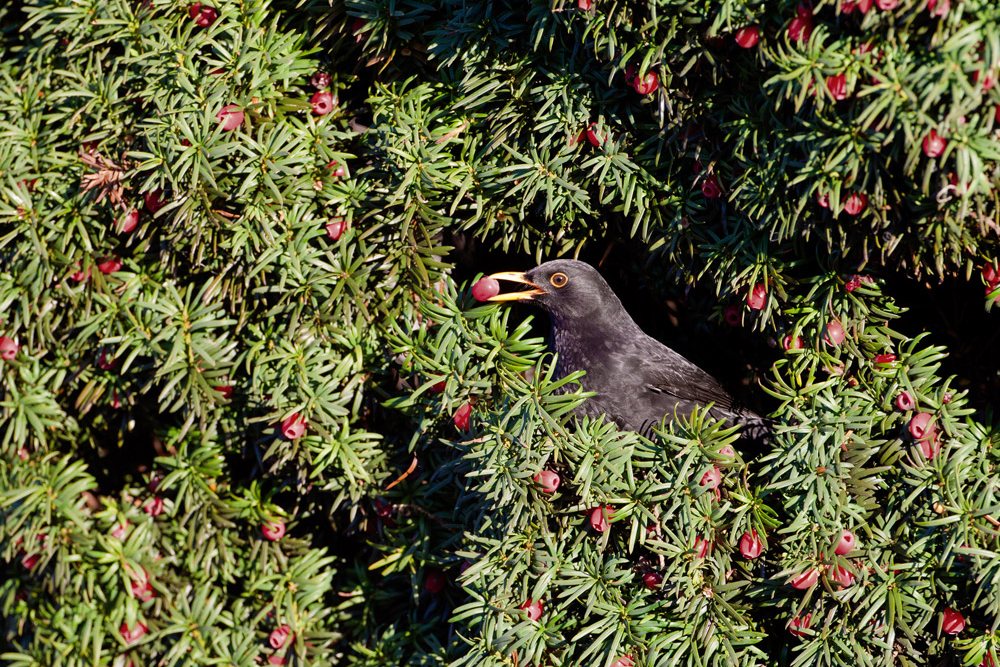




Share this page